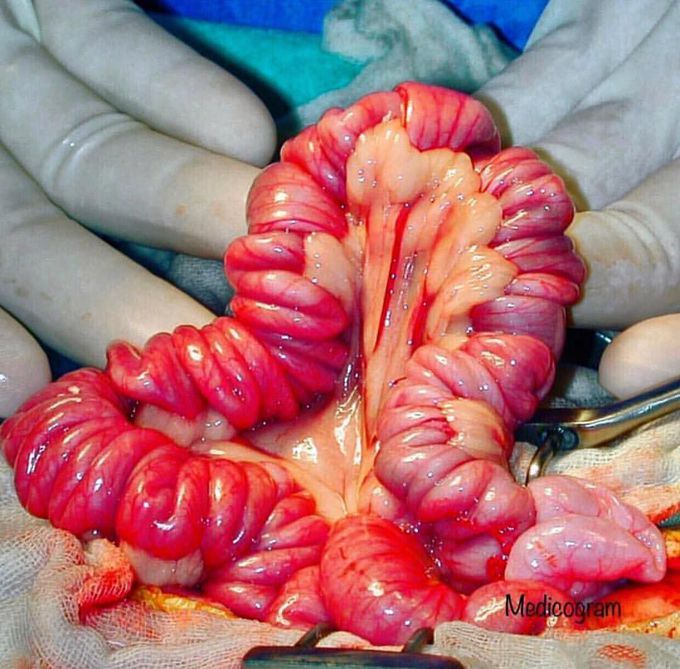


Picture depicting small intestine and the mesentery:
Mesentery is a double-layered continuation of the visceral and parietal peritoneum in the abdominal cavity. The mesentery functions to anchor the intestines to the abdominal wall. It is composed of a thin layer of peritoneum containing blood vessels, nerves, and lymphatic branches to allow the digestive system to function properly. The Mesentery also has an outerlining fat storage for protection. Technically speaking, there are three different mesenteries - the mesentery of the small intestine (mesentery proper), transverse mesocolon and sigmoid mesocolon. The image shows the mesentery of the small intestine. It is shaped like broad fan, attaching to the jejunum and ileum. Superiorly, it is attached to the end of the duodeno-jejunal junction. The blood vessels, lymphatics and nerves of the jejunum and ileum are found between the two layers of the peritoneum that make up the mesentery of the small intestine.

